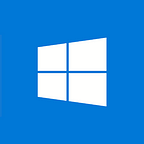Getting a reality check through MR
Trimble Connect application for HoloLens helps make sure construction is going right.
A sub-contractor is on a job about to cut a big hole through a wall. He received instructions from the general contractor off-site who got direction from the project manager in the main office, who was informed by plans drawn up by architects and engineers months ago. With all these stakeholders in this pseudo game of telephone, how can an owner/operator be sure that hole is going to be in the right place?
The Trimble Connect application, powered by mixed reality (MR) technology projected on a HoloLens, brings together all the disciplines involved in the various stages of construction — so architectural and excavation blueprints, sewage and waste pipes, and more are all visible on the same virtual model. Before, each company involved would have used a different software package.
“You can load up the model and see, ok, the hole is in the right place,” says Darren Thomson, senior developer at Trimble. “It gives you peace of mind that it won’t cause any problems further down the line.”
As well as providing a quick sanity check that everything is going according to plan, the application allows for those on site to have a conversation about potential problems with other people working on the project.
Users are able to work on their computers and see the model without constantly taking the headset off and putting it back on again. Plus, the model can be seen in context, thanks to the fact it includes a view of the real world.
“Trimble Connect is a perfect fit for MR,” Darren says, “as it lets you see the people and site you’re working with while still visualizing the model. Augmented reality isn’t immersive enough, and virtual reality is like wearing a blindfold. We see mixed reality as the enterprise winner.”
The application was a finalist for the Windows Developer Award for Commercial Developer of the Year, which celebrates those looking to help enterprise audiences.
Building in the physical and digital
Trimble aims to connect the physical and digital worlds. It’s core technologies include positioning, modeling, connectivity, and data analytics to improve productivity, quality, safety, and sustainability. The company’s software, hardware, and services are used in a range of industries like agriculture, construction, geospatial and transportation, and logistics.
Darren’s talents are on an equally broad spectrum — he started out making databases and his first degree is in chemistry — but it’s his time spent as a property developer that best prepared him for working with the HoloLens.
“When it comes to putting equipment in mines, on diggers, and on agricultural equipment, because I’ve worked with that kind of kit, I understand it better than someone who has just been an app developer all their life,” he says. “I think I’m a little more able to put myself into various users’ shoes because I’ve been there in a lot of cases. My past has been extremely useful for my current role at Trimble.”
He gets the same kick building things virtually using software as he does from making physical bricks-and-mortar structures. Though the scope is greater working in the digital world. “I get a great feeling making something and putting it out there for other people to use,” he says. “An artist would probably disagree with me, but it’s really liberating working with computers. It’s a bit more along the lines of ‘if you can imagine it, you can build it.’ There are fewer limits on what you can do in the digital world.”
Darren started making databases, after seeing how much needless paperwork was involved in factories. “Every time they wanted to do an audit, someone would have to spend two weeks going through all these papers in order to see what was actually going on,” he says. “My databases collected the data in real time, then to audit, you just clicked a button and you had the data at your fingertips.”
He started developing mobile applications so that he could access the databases on his phone. Then he worked on an application that let the user collect geotagged information (“You held your phone up and saw a flag in the ground where someone had captured a GPS point.”) That brought him to the attention of the group doing the initial prototype of Trimble Connect for HoloLens. And the rest, as they say, is history.
There’s no right way to do MR
Despite the success of the Trimble Connect application, Darren isn’t done yet. Sure, it does a pretty great job of translating the Trimble Connect web platform into a MR experience, but because MR is so new, they’re effectively in unchartered territory.
“With phone apps or web apps, there’s a pretty good list of best practices out there — this is what a button should look like and what it should do,” he says. “But with MR, no one’s really hit the nail on the head for that yet. There’s a fairly large UI/UX element to this, so it’s still a work in progress. I haven’t seen any MR apps that make me say ‘Yeah, that’s the way to do it.’
The technology moves fast, too. This makes it a terrifically exciting area to be in, but also means a steep — and constant — learning curve. “Five or 10 years from now, how we work will be completely different,” he says. “The problems we deal with today are just temporary. How we interact with these devices could change completely in the blink of an eye.”
Excitement, a fast-pace, with plenty of challenges ahead…it’s all in a day’s work for this software developer.
